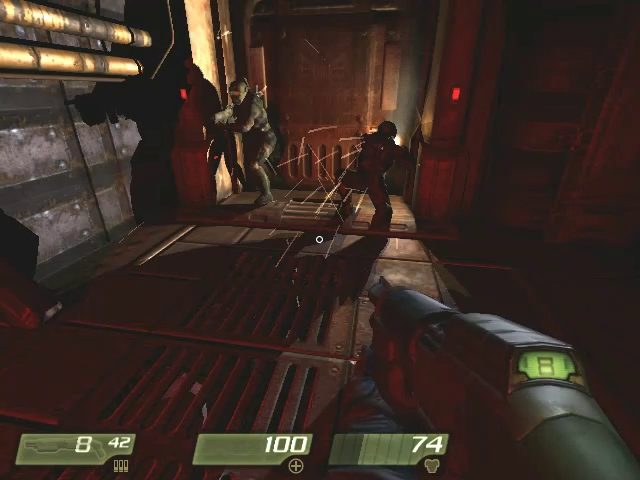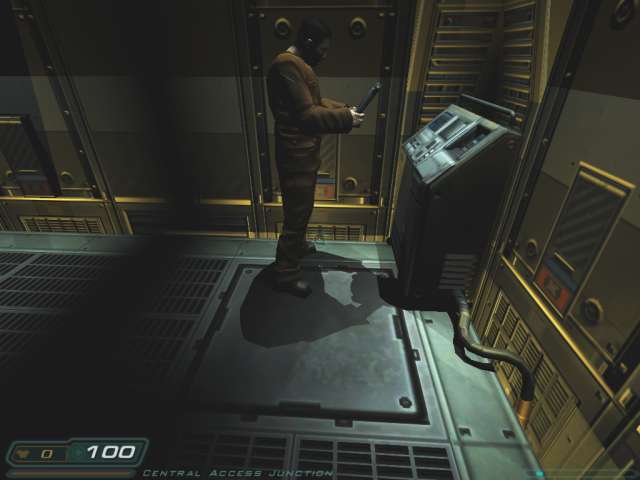
Doom 3 has a rather superb graphics engine which, among many innovative things, supports dynamic shadows. The support is actually pretty complete: Not only moving objects but actually the entire scene can have accurate shadows from multiple moving light sources. This means that every single small detail in the scene has a shadow (if it's lighted from an appropriate direction), even multiple shadows if there are many light sources (which have been marked as causing shadows in the level data) and even if these light sources move or the scene changes or both.
While the Doom 3 engine only supports sharp shadows (ie. shadows from point light sources) and not smooth shadows (from area lights), it still makes many scenes quite impressive. For example, there's a scene where a man walks carrying a lantern along a set of corridors which is a superb show of the shadowing engine.
However, there's one odd thing: Try finding in the internet a snapshot of Doom 3 which really shows the shadows in action. From the hundreds of snapshots out there, you will find perhaps 1 or 2, and even in them it's not quite clear that the shadows are so accurate as they are.
I try to remedy this problem with this page. Here I present several snapshots of Doom 3 showing its shadow rendering features (with explanations). I have increased the brightness (and contrast) of these snapshots because Doom 3 is really a dark game best played in a dark room with a bright monitor, and snapshots viewed in regular conditions tend to look quite dark.
This image shows a basic shadow, of the man standing there. Although this snapshot doesn't yet show the full power of the shadow engine (even other games which do not have fully dynamic shadows such as HL2 can show at least this kind of shadows), but it's a start:

While it may be not immediately obvious from this snapshot, models do not only cast shadows onto the scenery but also onto themselves, like the nose of the model here:
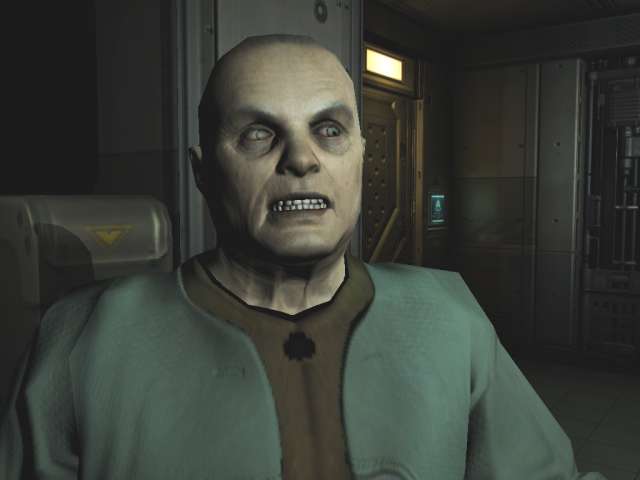
This snapshot shows how models cast shadows on all surfaces, not just the floor (like in many other games):
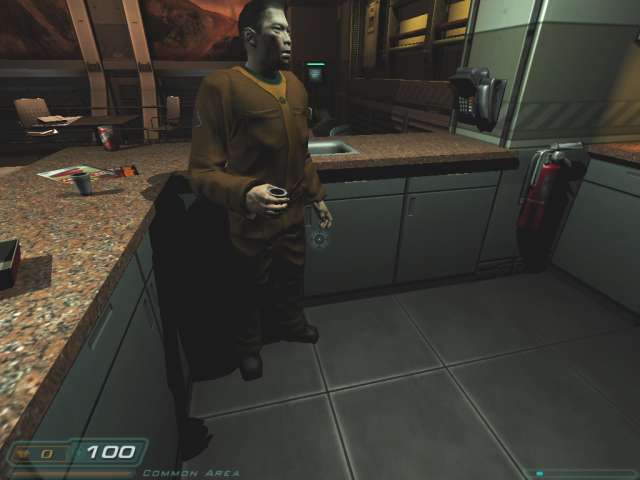
Another similar snapshot. Notice how detailed the shadows are; even individual fingers have their shadow projected on the wall:
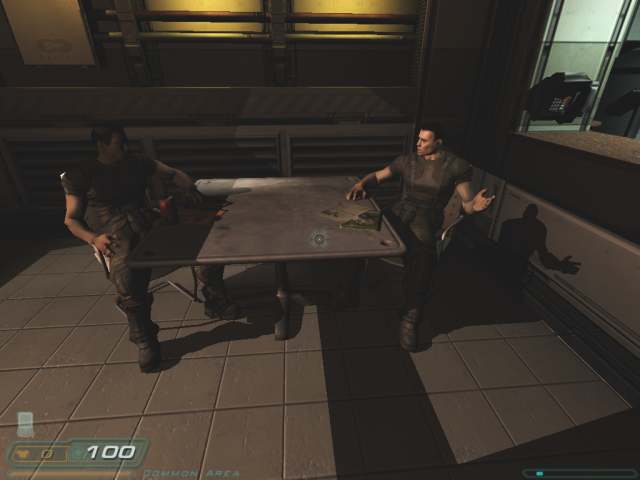
This pair of snapshots show how the shadow of the model is truely calculated from a point light in the ceiling:
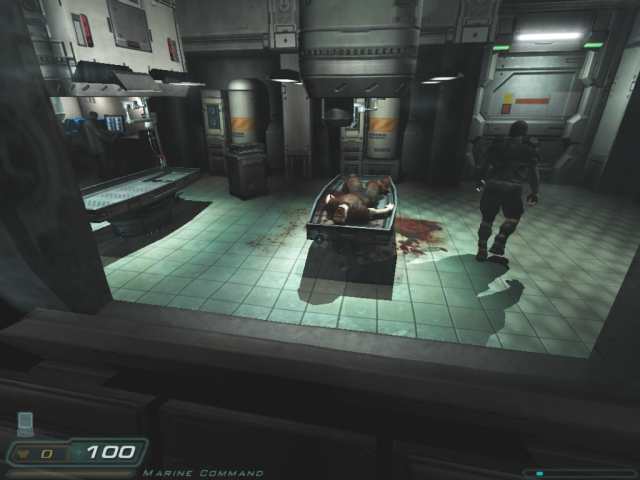
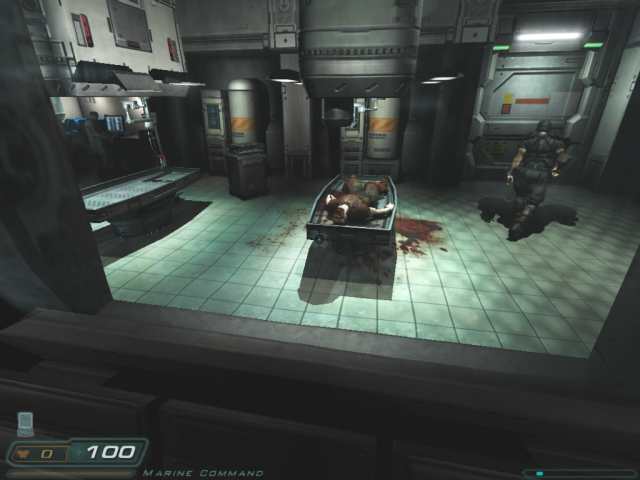
Another similar pair of snapshots, this time showing the shadow on different surfaces:
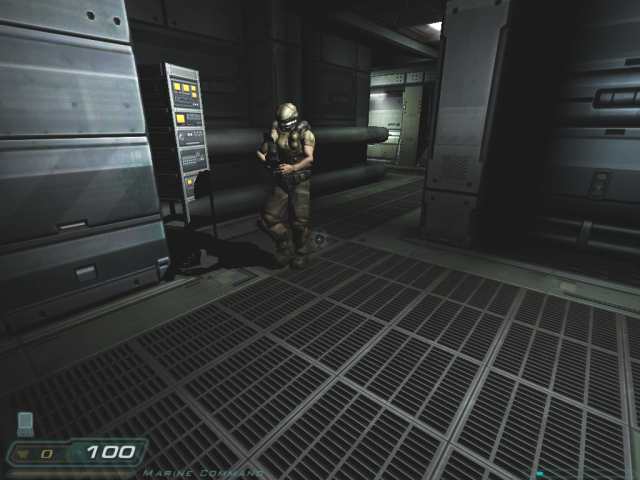
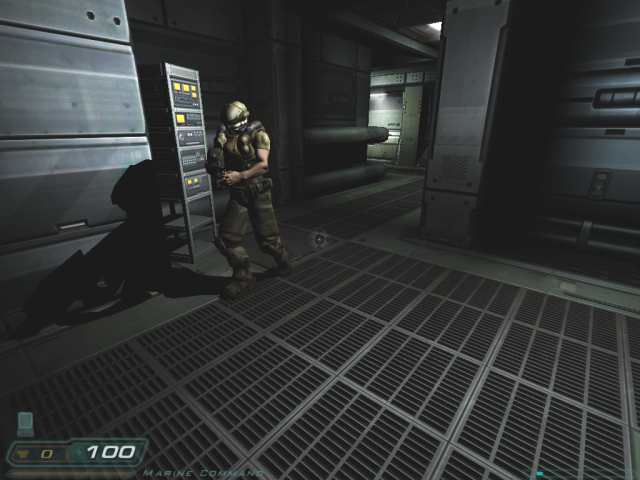
This pair of snapshots demonstrate how the shadows of the scenery change with a moving light source (these images have not been brightened):
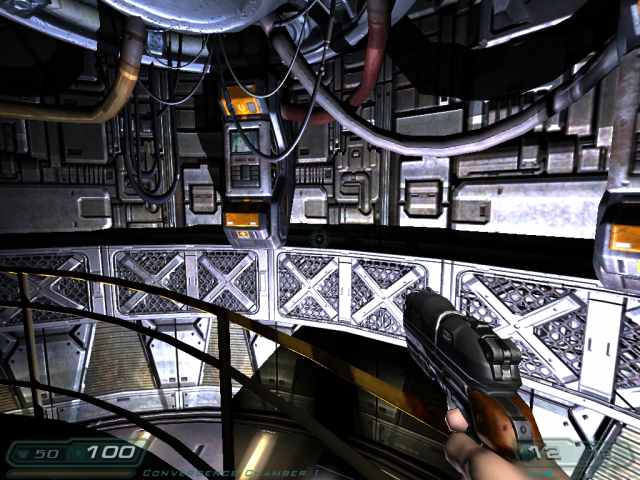
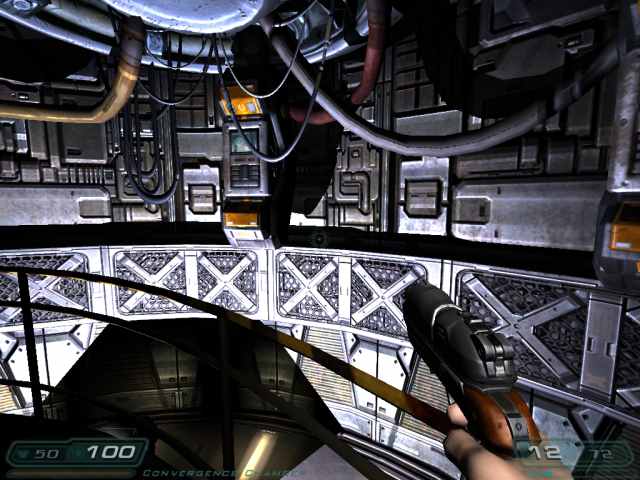
Another similar pair of snapshots. Notice how even the handrail casts a shadow onto the wall. In the game it is even more impressive.
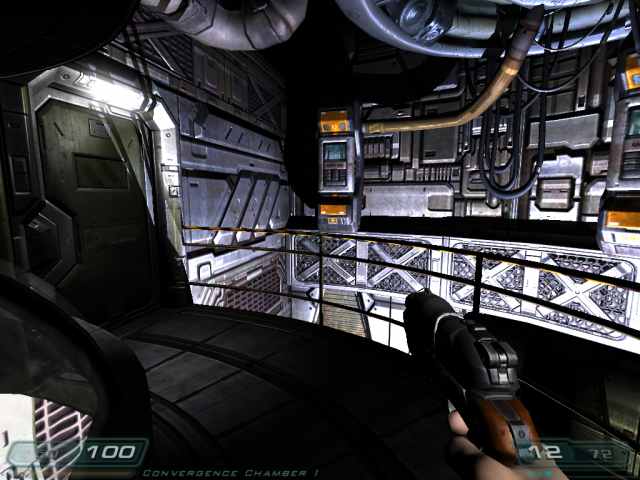
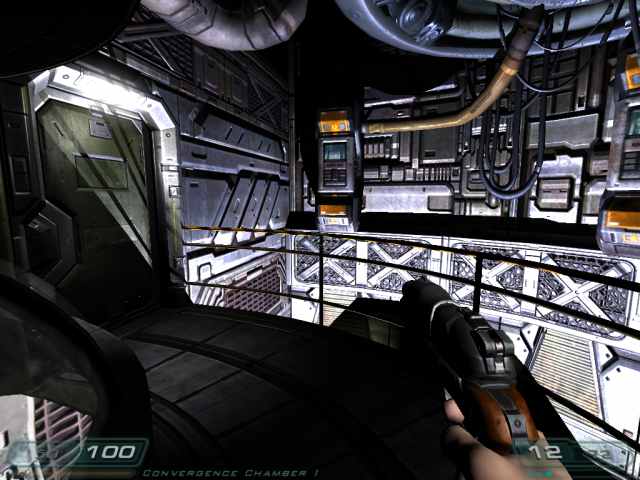
In this snapshot the man is lighted by a light source on the floor. His shadow is projected to the ceiling:
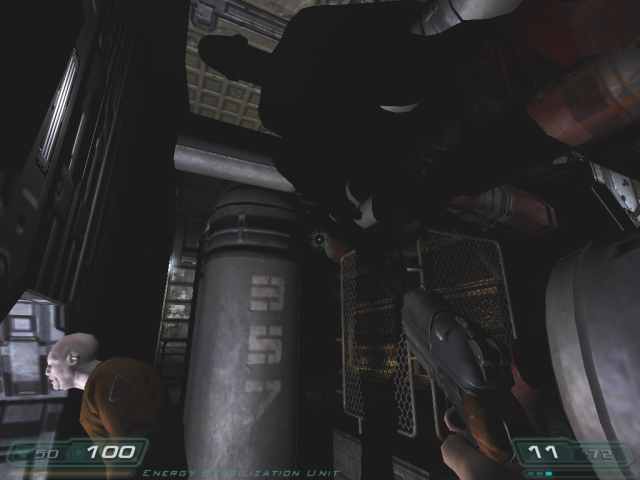
This is actually a cropped image from a larger snapshot (because I couldn't get close enough before the monster died). The shadow of the monster on the wall is projected by a moving light source (on a small robot). Notice also how it has another shadow on the floor caused by the fireball:
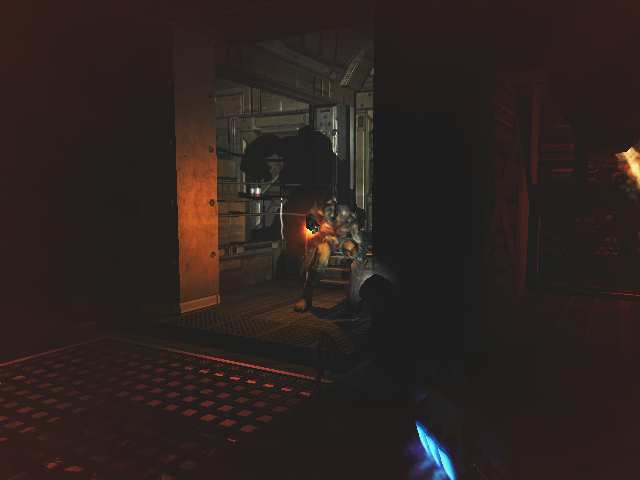
A snapshot from Quake4, a game using the Doom3 engine:
